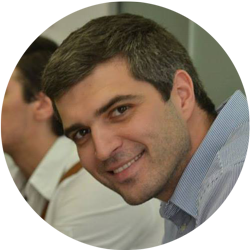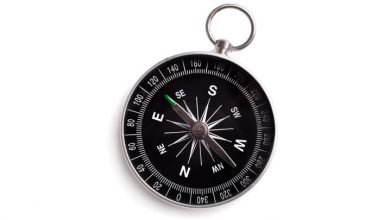What is your story?
This is a simple but powerful exercise that can be used by a trainer to demonstrate true interest in the realities and influences that have formed a learner's values and beliefs. It can be a personal reflection, but it is mostly used for sharing in groups and connecting on a deeper level. The exercise is called "emotional biography" because it is a process of describing, writing, and sharing the emotional experiences that shaped you the most as a person. One can easily understand the influences that have formed a person's values and beliefs by listening to his/hers emotional biography.

We all have our own story. Everyone has gone through a unique set of experiences and the impact that those experiences had on one’s perceptions, values and beliefs is different and very personal. A biography is a description of one’s life. An emotional biography means that you need to look at your life from an emotional point of view. With this tool, we want to reflect on the experiences, and more specifically, the emotional experiences that have shaped our own perceptions. The Emotional biography exercise is one that will make you go deeper in understanding your own realities and influences that have shaped your values and beliefs and even more it will help you understand the learners’ realities and influences that have shaped their values and beliefs (if done in a group).
- Creating a safe place – The most important thing when using this tool is that you need to choose a place where you feel safe, calm and peaceful. If you are doing this with a group or with your team, then make sure that everyone is feeling comfortable. This and a good understanding (and introduction) of the process is crucial for having a positive change in yourself and other learners.
- Writing the story – Take a paper and pen. This is an individual work and if you can, you should also play some relaxing background music. While writing the story you should have in mind the following points/questions:
– How was my childhood? Describe the fondest memories you hold from your childhood. What are the most vivid memories? Why? What was happening? Who was there? How did you feel?
– What were the most emotional experiences for you, when reflecting back on your life? How do you feel when you think about them? How do you think those emotional experiences shaped your views?
– What is the emotional attachment to your parents? How do you feel when you are around them? How do you feel when they are not there? What are the biggest influences your parents had on you? Do they still have?
– Think of moments when you felt really sad. Think of moments when you felt really happy. Why were you sad/happy? What was happening? What was important to you? How those moments impacted your life? And the values, beliefs, and perceptions you hold?
Spend at least half an hour thinking and writing about your story. You might feel overwhelmed and emotional in the process of writing. This is ok. It is important to understand that everyone is going through a similar process.
- Sharing your story – Now be careful. If you are using this tool for your own personal reflection it is going to prepare you for showing genuine interest in the realities and influences that shaped the learner’s values and beliefs. And the biggest impact of this tool comes if you are using it within a group or a team. Your role as a trainer here is to be careful with people’s emotions and make sure that everyone feels comfortable to write and share their stories. Sharing your emotional biography with others makes everyone understand your realities and influences that shaped you, on a deeper level. There are so many moments and experiences that have subconsciously made you the person you are. Through sharing these experiences you are awakening your senses and the subconscious becomes conscious. When you become aware of it, it is easier to manage it, in a way that you can question that belief or reaffirm it. When done this within a group or a team, it connects the participants on a much deeper level of understanding and a lot of the attitudes and behaviors make a lot more sense afterward. Just again, be careful that the environment is safe and comfortable for sharing. Otherwise, it will not work. It is also important that the environment is empathic and supportive. After everyone’s sharing, show respect and recognition of the person’s story. Everyone has its own weight and helping people carry or offload their weight comes with empathy and recognition of one’s worth.
- Civic engagement perspective – Mastering the sensitivity and genuine interest in the realities and influences that shaped the values and beliefs of the learners is an important step in mastering the “civic engagement” competence. Being able to understand one’s source of attitudes and steer discussions that make people understand their perceptions will enable you to empower young people in the direction they care and will be meaningful for them. On another hand, if their perceptions are destructive and negative, you will be able to ask questions to make them reflect and understand the importance of integrating universal values and principles, such as integrity, equality, freedom, justice, human rights, solidarity, kindness, tolerance, respect, pluralism.
Why did I choose this tool?
This tool is a simple, but powerful way to go deeper into one’s perceptions, values, and beliefs. This tool can be a good way to start the process of meaningful reflection and it can be used as a good set up for the “personal values assessment” (link) or after that, for steering a meaningful sharing.
Suggested Reflection Questions
Exercise:
The exercise is described in the tool. Another remark is that if someone doesn’t feel like sharing or writing that is also fine. People should be ready to do this since it is an emotional and deeper process that some might not be ready to undertake (or don’t want to go back in their past – just then.). The exercise is best done (recommended) for teams working together that already have understanding of each other.
Other Ways to Practice: In a group, and very powerful for teams
The significant problems we face cannot be solved at the same level of thinking we were when we created them. – Albert Einstein
This tool is coming from the curator’s experience he has with youth work. No specific author can be found on this, it is a mix of different approached to achieving this goal.





